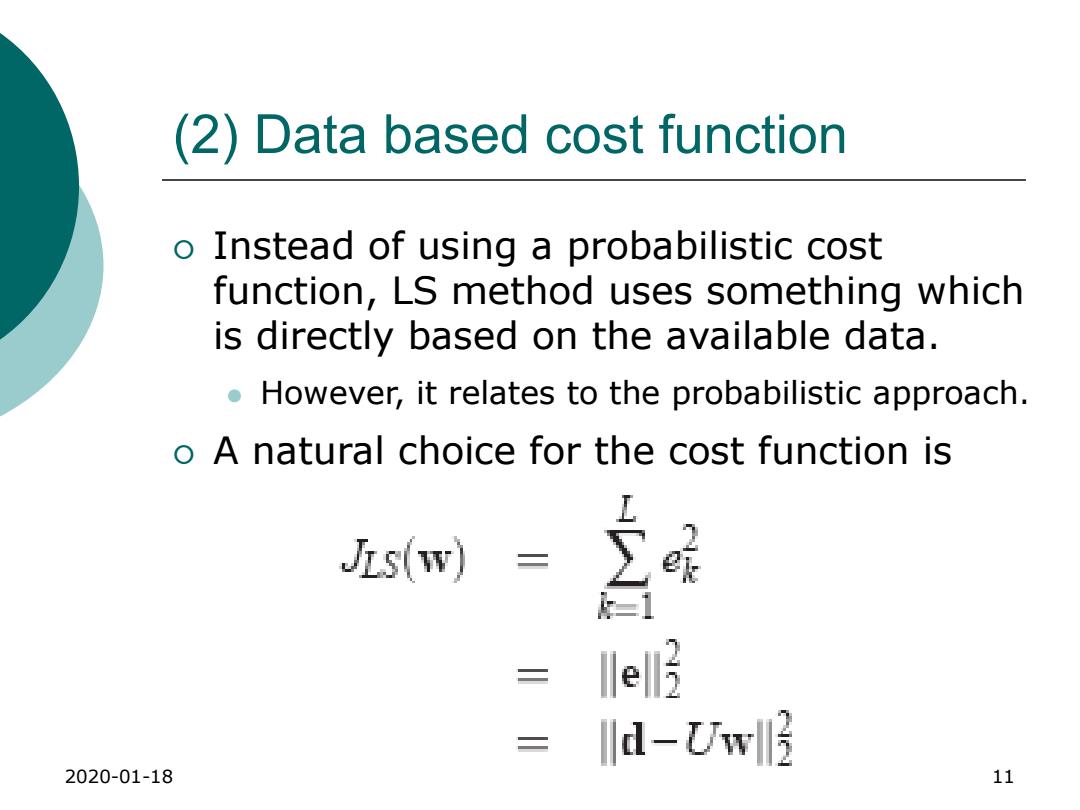
(2)Data based cost function 0 Instead of using a probabilistic cost function,LS method uses something which is directly based on the available data. However,it relates to the probabilistic approach. o A natural choice for the cost function is L 五s(w) 三 d-Uwll 2020-01-18 11
2020-01-18 11 (2) Data based cost function Instead of using a probabilistic cost function, LS method uses something which is directly based on the available data. However, it relates to the probabilistic approach. A natural choice for the cost function is
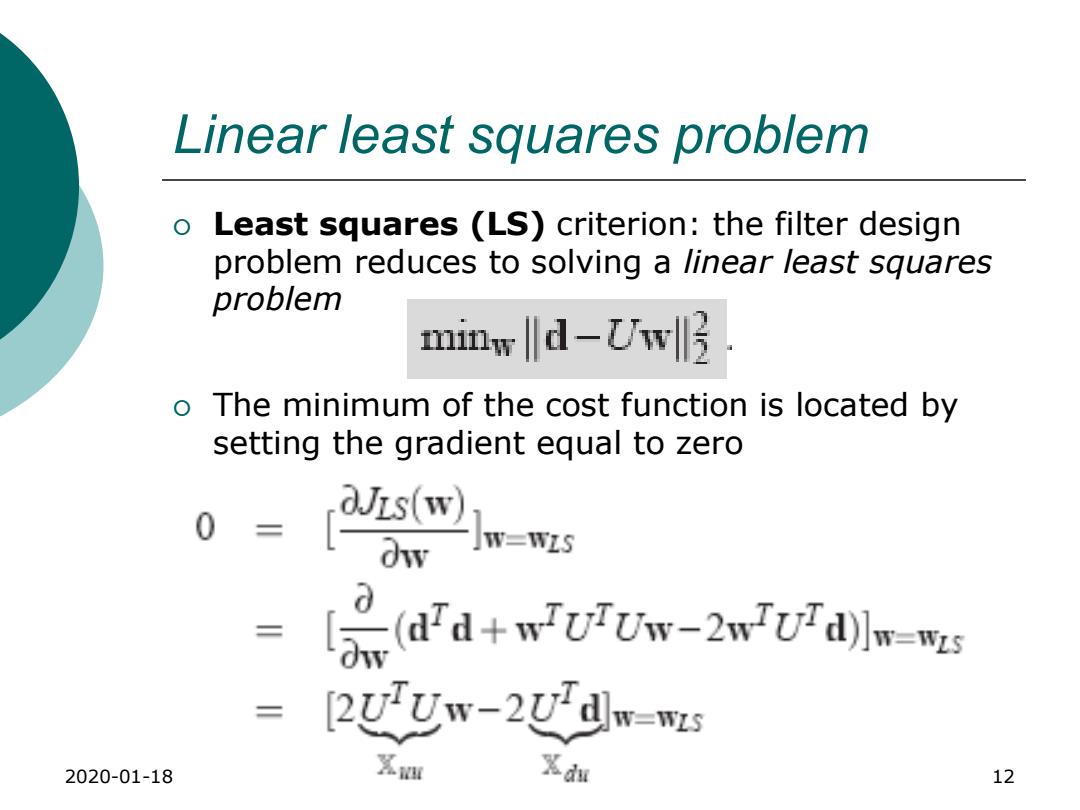
Linear least squares problem o Least squares (LS)criterion:the filter design problem reduces to solving a linear least squares problem minwld-Uwll o The minimum of the cost function is located by setting the gradient equal to zero ow I(dd+wUTUw-2wTUd)lw-w [2UUw-2Udlw-wzs 2020-01-18 %d加 12
2020-01-18 12 Linear least squares problem Least squares (LS) criterion: the filter design problem reduces to solving a linear least squares problem The minimum of the cost function is located by setting the gradient equal to zero
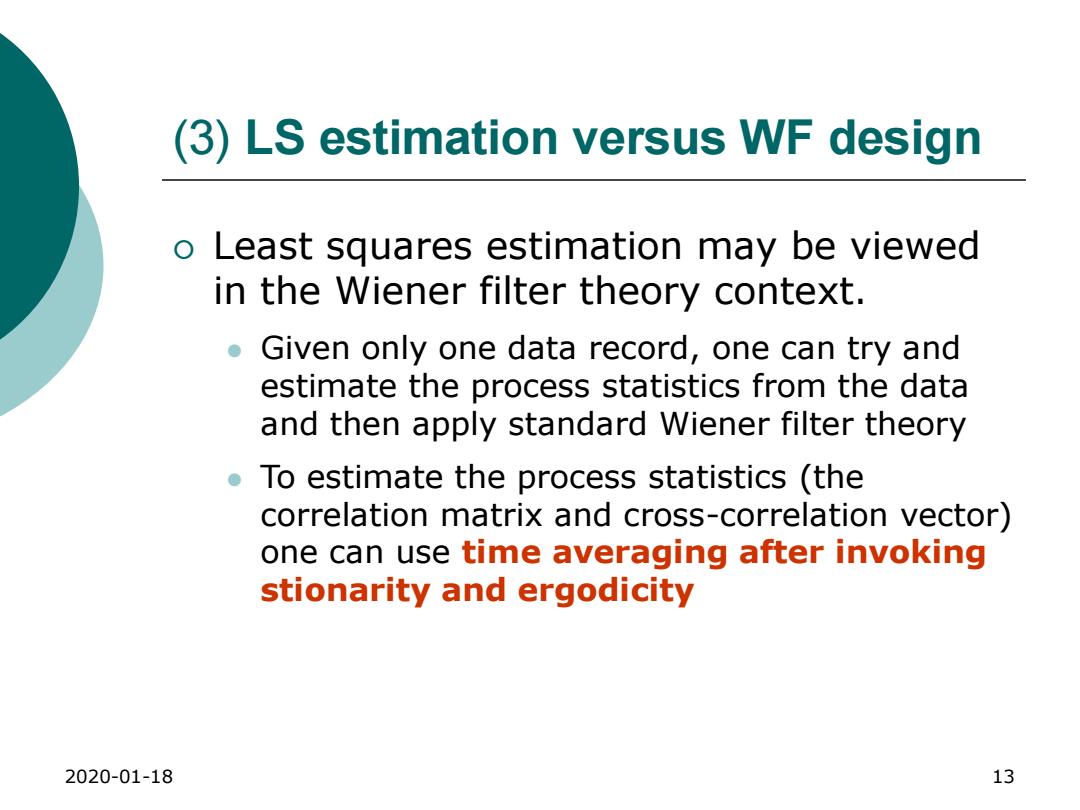
(3)LS estimation versus WF design 0 Least squares estimation may be viewed in the Wiener filter theory context. Given only one data record,one can try and estimate the process statistics from the data and then apply standard Wiener filter theory To estimate the process statistics (the correlation matrix and cross-correlation vector) one can use time averaging after invoking stionarity and ergodicity 2020-01-18 13
2020-01-18 13 (3) LS estimation versus WF design Least squares estimation may be viewed in the Wiener filter theory context. Given only one data record, one can try and estimate the process statistics from the data and then apply standard Wiener filter theory To estimate the process statistics (the correlation matrix and cross-correlation vector) one can use time averaging after invoking stionarity and ergodicity
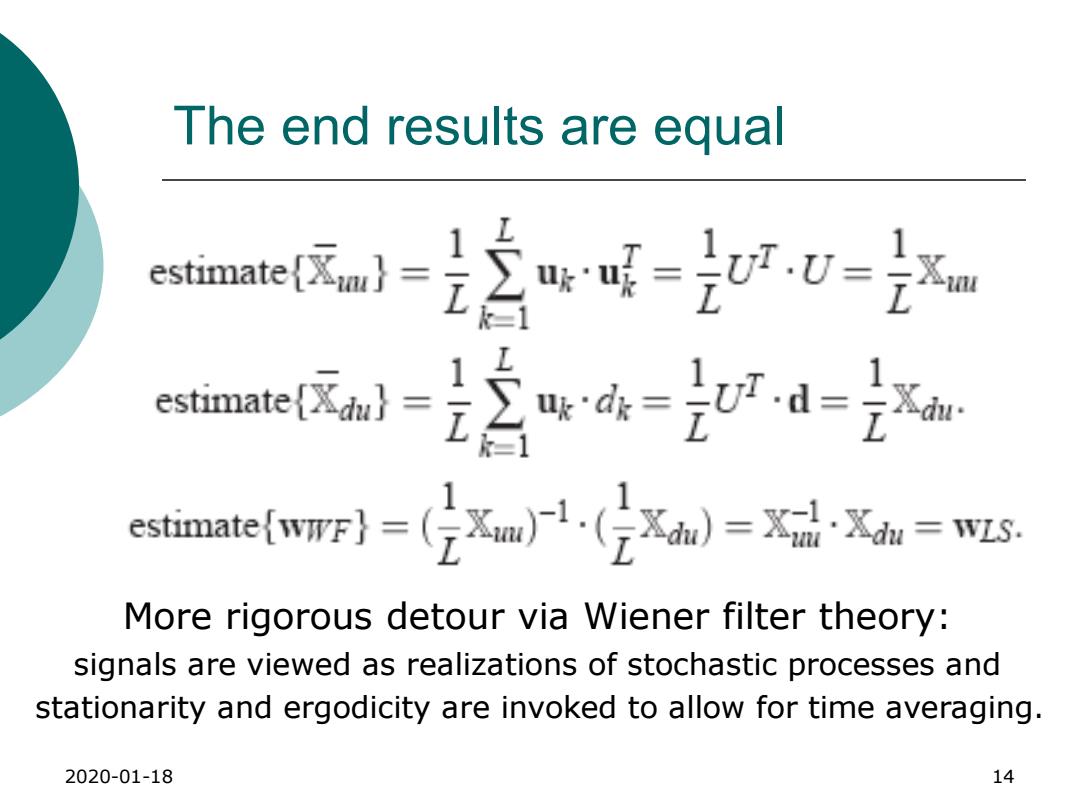
The end results are equal ma风}=2wg时=-u=2五 estimate}=(2Xm1广-(xa)=X·Xw=wzs. More rigorous detour via Wiener filter theory: signals are viewed as realizations of stochastic processes and stationarity and ergodicity are invoked to allow for time averaging. 2020-01-18 14
2020-01-18 14 The end results are equal More rigorous detour via Wiener filter theory: signals are viewed as realizations of stochastic processes and stationarity and ergodicity are invoked to allow for time averaging
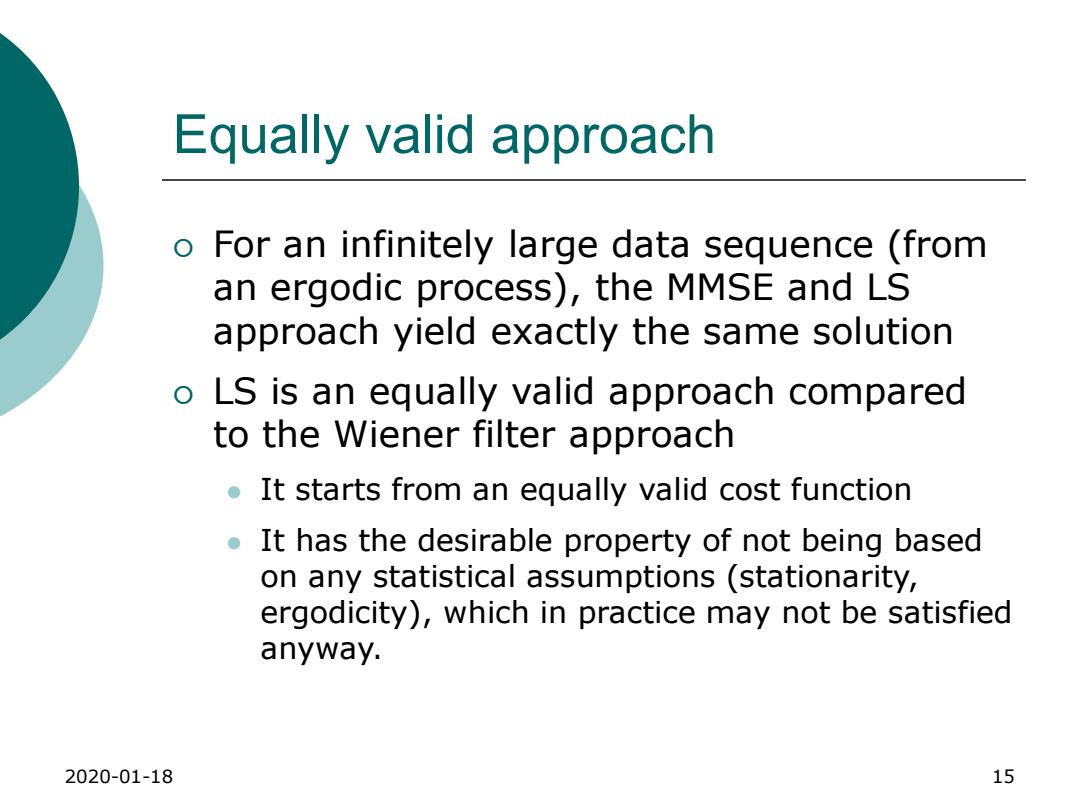
Equally valid approach o For an infinitely large data sequence (from an ergodic process),the MMSE and LS approach yield exactly the same solution o LS is an equally valid approach compared to the Wiener filter approach It starts from an equally valid cost function It has the desirable property of not being based on any statistical assumptions(stationarity, ergodicity),which in practice may not be satisfied anyway. 2020-01-18 15
2020-01-18 15 Equally valid approach For an infinitely large data sequence (from an ergodic process), the MMSE and LS approach yield exactly the same solution LS is an equally valid approach compared to the Wiener filter approach It starts from an equally valid cost function It has the desirable property of not being based on any statistical assumptions (stationarity, ergodicity), which in practice may not be satisfied anyway